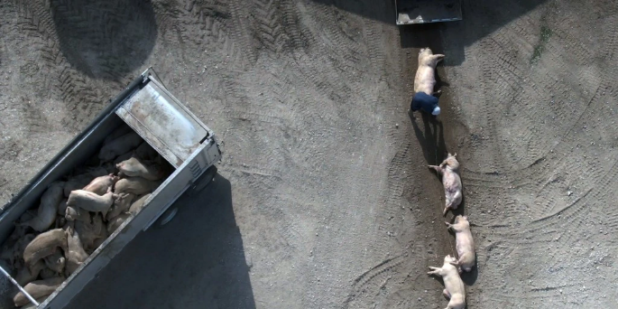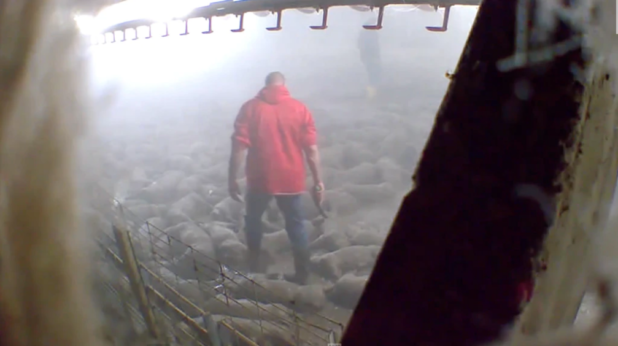If prices are still up even as the supply chain is recovering, then I wonder how much this price hike has to do with commodity scarcity, and how much of it is just inflation from flooding the money supply to keep investors fat and sedated.
AP:
As if trips to the grocery store weren’t nerve-wracking enough, U.S. shoppers lately have seen the costs of meat, eggs and even potatoes soar as the coronavirus has disrupted processing plants and distribution networks.
Overall, the cost of food bought to eat at home skyrocketed by the most in 46 years, and analysts caution that meat prices in particular could remain high as slaughterhouses struggle to maintain production levels while implementing procedures intended to keep workers healthy.
While price spikes for staples such as eggs and flour have eased as consumer demand has leveled off, prices remain volatile for carrots, potatoes and other produce because of transportation issues and the health of workers who pick crops and work in processing plants.
In short, supermarket customers and restaurant owners shouldn’t expect prices to drop anytime soon.
“Our biggest concern is long-term food costs. I believe they will continue to go up,” said Julie Kalambokidis, co-owner of Adriano’s Brick Oven, a restaurant in Glenwood, Iowa.
Tamra Kennedy, who owns nine Mexican-inspired fast food franchises in Iowa and Minnesota, joined Kalambokidis on a call set up by Iowa U.S. Rep. Cindy Axne and said sometimes even getting essential ingredients is difficult.
“You can pick an ingredient and I can tell you there are shortages,” she said.
Big fluctuations in food prices began in March, when the coronavirus pandemic began to sink in for U.S. consumers.
The Labor Department reports that the 2.6% jump in April food prices was the largest monthly increase in 46 years.Prices for meats, poultry, fish and eggs increased the most, rising 4.3%. Although the 2.9% jump in cereals and bakery products wasn’t as steep, it was still the largest increase the agency has recorded.
Dairy and related products, and fruits and vegetables increased by 1.5 percent in April.
Egg prices also reached an all-time record of more than $3 a dozen in late March, but they have since fallen to less than $1 a dozen.
The situation has been worse for meat prices, largely because of illnesses among slaughterhouse workers. The outbreaks struck pork processing plants the hardest, but beef and chicken processors also saw some impact as thousands of workers tested positive for the virus and the United Food and Commercial Workers union said at least 44 workers had died of COVID-19 as of Friday.
April retail prices for boneless pork chops and ham were nearly 6% higher than in March and retail prices for hamburger and sirloin steak were about 4% higher, the U.S. Department of Agriculture reported. The price of whole fresh chickens rose by more than 12%.
After numerous closures, most pork plants have reopened but often not at full capacity, forcing pig farmers to euthanize animals that couldn’t be processed.
…
By mid-May, beef and pork slaughterhouses were operating at about 60% capacity, though that figure has since climbed to nearly 90%, said Jayson Lusk, an economist at Purdue University. Although Lusk was optimistic that the worst of the meat supply crunch is over, he said it’s always possible that a second wave of illness could cause the situation to worsen.
…
Given that the percentage of Americans’ paychecks that go toward food has declined over the past 50 years, many people likely can handle the recent price increases. But the coronavirus also has pushed roughly 41 million Americans out of work, and for them, even a small price hike can be troubling.
“We’ve obviously seen this record increase in unemployment filings, and so there are more people who are at risk in that sense that they literally don’t have any employment to secure the money that they would need to buy the food that they traditionally purchase,” Malone said. “For the people who are already operating on the margins, these price increases are nontrivial.”
It’s also a tough time for livestock farmers, who had hoped that after some down years, they would benefit from new trade deals and a strong domestic economy.
“Farmers thought they saw the light at the end of tunnel,” Lusk said. “It turns out that it was the headlight of a train.”
Story of my life.
It usually serves me well to assume that things will always find a way to get worse – and that would be for these prices to continue to rise month by month, even as supply chains normalize, driven by worsening financial factors. We’ll see.
Meanwhile…
Iowa’s largest pork producer, Iowa Select Farms, has been using a cruel and excruciating method to kill thousands of pigs that have become commercially worthless due to the coronavirus pandemic. As is true for so much of what the agricultural industry does, the company’s gruesome extermination of sentient animals that are emotionally complex and intelligent has been conducted entirely out of public view.
But The Intercept, as the result of an investigation by animal rights group Direct Action Everywhere, or DxE, has obtained video footage of the procedure and the resulting carnage that occurred at one of the company’s facilities in mid-May. Additionally, a whistleblower employed by Iowa Select has provided extensive details to The Intercept about the extraordinary methods now being employed to kill pigs — agonizingly and over the course of many hours — in increasingly large numbers.
What prompted both the DxE investigation and the whistleblower to come forward is Iowa Select’s recent adoption of the mass-extermination method known as “ventilation shutdown,” or VSD. Under this method, pigs at the company’s rural Grundy County facility are being “depopulated,” using the industry’s jargon, by sealing off all airways to their barns and inserting steam into them, intensifying the heat and humidity inside and leaving them to die overnight. Most pigs — though not all — die after hours of suffering from a combination of being suffocated and roasted to death. The recordings obtained by The Intercept include audio of the piercing cries of pigs as they succumb. The recordings also show that some pigs manage to survive the ordeal — but, on the morning after, Iowa Select dispatches armed workers to enter the barn to survey the mound of pig corpses for any lingering signs of life, and then use their bolt guns to extinguish any survivors.
Yikes.
 Daily Stormer The Most Censored Publication in History
Daily Stormer The Most Censored Publication in History




